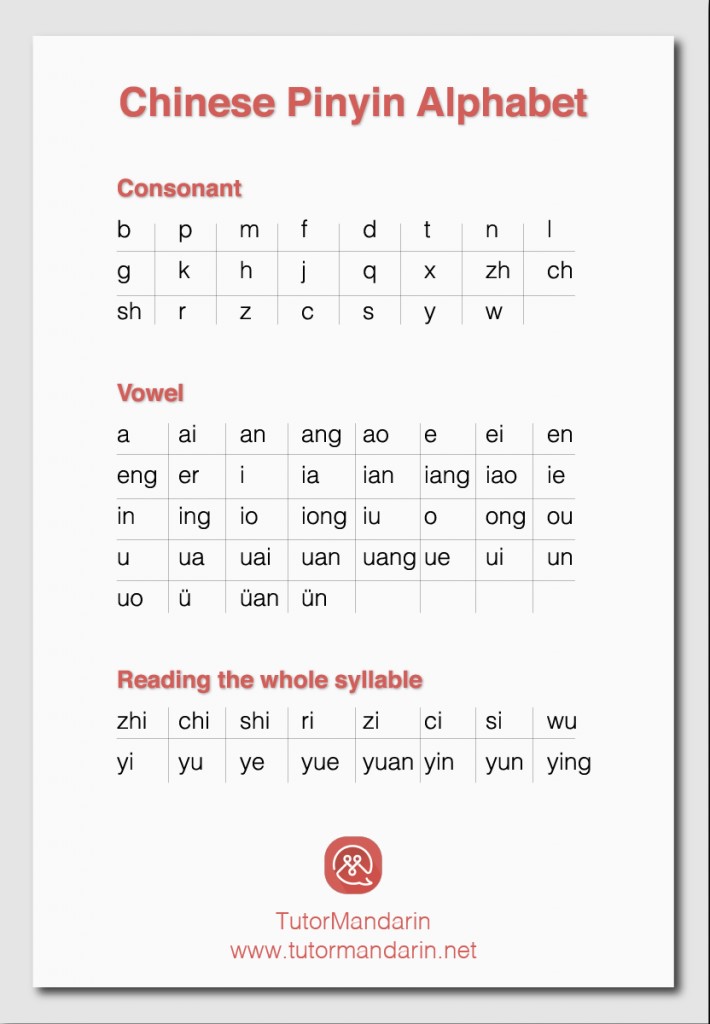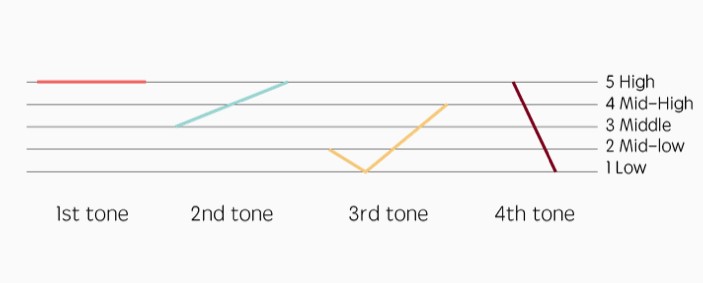How do I start to learn Mandarin? Guest post from Sam Silverman
This is a guest blog post from Sam Silverman of TutorMandarin. TutorMandarin helps students learn Chinese online through PC software or their Learn Chinese APP with live, 1-on-1 tutors.
You’re interested in learning Chinese but just don’t know where to start.
Plus, you’ve heard some horror stories about how hard a language it is to learn. Is it really that hard? Why is it so hard? Maybe if you figure out why it’s hard you can find a better way to study it. So what is this better way and how can you apply it right from the beginning? Calm down. We’re here to set the the record straight!
Here are 7 steps to start learning Mandarin from scratch.
1.Pinyin (Aka. the Chinese alphabet)
The start of any language is learning its alphabet and its pronunciation. However, Chinese doesn’t have an alphabet… or does it? Enter Pinyin. Pinyin, which some people call the “Chinese alphabet,” is a way to symbolize Chinese pronunciations using the 26 letter English alphabet. That means, if you’re an English native speaker (reading this English article…) then you can use it to learn Chinese. Here’s a quick taste of how its done.
The character 你 is written in pinyin as “ni.” This would be pronounced like the English word “knee” using a similar “n” sound and a long “i” sound. Easy, huh? However,some Chinese pronunciations don’t quite fit as well into English. The Chinese word “只” is pronounced with pinyin “zhi,” which actually sounds like “jur” where the “zh” makes a “ja” sound and the “i” sounding like “ur” in this instance. So it can be a bit trickier.
Here’s a download of the PDF above: https://www.tutormandarin.net/en/chinese-pinyin-alphabet-free-pdf-download/
Here’s a free youtube video with all the pronunciations of the consonants and vowels:
2. Tones
There’s more to learning pinyin than just pronunciation. You also have to learn Chinese tones.
There are only 4 tones in Chinese and one 5th ‘non-tone.’ In general, it’s not hard understand the tones and how they work. However, it can be difficult getting comfortable using the tones and listening for them.
The first tone is start at the “mi” of “do-re-mi” and holds the tone. It is relatively high pitched and fun to say! The second tone raise up from “re-mi” much like you do when you ask a question and raise your tone at the end of a sentence. The third tone starts at “re” dips down to “do” and rise all the way up again. It’s something like the Southern drawl in the word “howdy.” The fourth tone starts at “mi” and goes sharply down to “do.” It sounds like an angry parent yelling.
Chinese tones are applied together with pinyin pronunciation.The character 你 is pronounced “ni” and is said with the third tone (the one that sounds like a dipping southern drawl). That means in pinyin it would be written in as nǐ. The word for love is 爱 which sounds like “ai” (sounds like ‘eye’) and is said with a fourth tone (sounds like angry descending tone) to become ài.
Saying the tones correctly isn’t so hard. But it becomes difficult saying them smoothly with quick succession. Also, it’s difficult getting used to a native speaker speaking full complicated sentences with a myriad of tones.
3. The Basics
“First things first” is the strategy here. Learning Chinese, like learning any language, is done most efficiently by choosing the most 100 important words. Chinese language standards are set by the HSK, the Hanyu Shuiping Kaoshi (汉语水平考试), roughly translated to Chinese Level Test. The HSK goes from the lowest level 1 up to its highest level 6.
HSK breaks down exactly what words and what grammar you need to learn for each level, sorting out both vocab and grammar from easy to hard. Beginners should all start learning words from HSK 1. Get the full list of words with examples sentences here.
4. Conversations
Start speaking from day one. Most people are learning a second language so they can speak it. Speaking it early and often will get you more comfortable with speaking the language. Plus, there are so many other benefits to having Chinese conversations.
By speaking Chinese you’re using the language as a tool that is hopefully reaching your purpose of being able to connect and communicate with other people from a different background. A great way to learn is from a native speaker!
5. Interests
Chinese takes a long time to learn and it’s hard to stay motivated the whole time. For most people the journey is comprised from many peaks and valleys.
One of the secrets to staying motivated is to dig into the interests that brought you to Chinese in the first place. If you like Chinese music or movies, this is a wonderful space to dive into to learn Chinese. It will improve your listening while teaching you lots of new things relevant to interests. If you have always wanted to read Chinese newspapers or books, you can start building up your reading skills and find interesting information to keep you excited. Often your interests will open up “new channels” for learning Chinese besides textbooks and exercises.
6. Goals
You probably had a goal when you started learning Chinese. But goals change and/or become clearer over time. After studying for some time it’s always good to re-evaluate your goals and make sure you’re on track. If you’re looking to become a confident conversationalist, then make sure you’re learning the necessary spoken Chinese to continue, and getting enough opportunities to use it. If you’re looking to learn more about Chinese philosophy through original texts, then you’ve got a different goal. Each goal will have a different route with different concrete steps to take. Check in from time to time to see that you’re getting what you want!
7. Enjoy
The last step is always to enjoy, or rather, to remember to enjoy the experience. Learning Chinese should be enjoyable. Being able to use Chinese should be empowering. Remember to enjoy both the journey up the ladder of Chinese fluency as well as the milestones you pass along the way.
Share:






